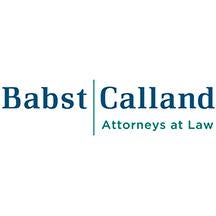On December 2, 2023, the U.S. Environmental Protection Agency (EPA) released a pre-publication version of its final Standards of Performance for New, Reconstructed, and Modified Sources and Emissions Guidelines for Existing Sources: Oil and Natural Gas Sector Climate Review (Final Rule). The Final Rule comes more than two years after EPA published its initial proposal on November 15, 2021 (Initial Proposal) and a supplemental proposal on December 6, 2022 (Supplemental Proposal) (collectively, the “Proposals”). According to EPA, the agency received over one million comments on the Proposals. For information on the Proposals, please see our November 11, 2021 and December 12, 2022 Alerts. This Alert focuses on critical aspects of the Final Rule, including key changes that EPA made since issuing the Proposals.[1]
Brief Overview of Methane Rule
The Methane Rule is comprised of four separate actions proposed under sections 111(b) and 111(d) of the Clean Air Act. EPA currently regulates emissions of volatile organic compounds (VOCs) and methane from oil and natural gas facilities under 40 C.F.R. Part 60 Subparts OOOO[2] and OOOOa.[3] First, through this Final Rule, EPA will regulate oil and natural gas facilities constructed, modified, or reconstructed after December 6, 2022, under a new Subpart OOOOb. The requirements in OOOOb will apply to affected facilities 60 days after the rule is published in the Federal Register. Second, under a new Subpart OOOOc, EPA finalized emissions guidelines that are intended to inform states in the development, submittal, and implementation of state plans to establish standards of performance for greenhouse gases (in the form of limitations on methane) from sources existing on or before December 6, 2022. Under the Final Rule, states and tribes are required to submit plans to EPA for review within 24 months of the publication of the Final Rule in the Federal Register, with a compliance deadline for existing sources that is no later than 36 months after the deadline to submit the plan to EPA. Third, the Final Rule amends OOOOa in response to Congress’ June 2021 revocation of regulatory amendments made by EPA under the Trump administration. Fourth, the Final Rule also includes “Appendix K,” a protocol for determining leaks using Optical Gas Imaging (OGI) that EPA now requires at natural gas processing plants regulated by OOOOb or OOOOc.
Key Requirements of Methane Rule
Significant changes from the existing OOOO and OOOOa regulatory frameworks include:
- Super Emitter Program: The Final Rule will allow certified third parties to monitor well sites, centralized production facilities, and compressor stations regulated by OOOO, OOOOa, OOOOb, or OOOOc using specific remote detection technologies for “super-emitter emission events,” which are defined as emission events resulting in 100 kilograms (220.5 pounds) per hour or more of methane. These third parties are required to submit notifications of super emitter events to EPA’s Super Emitter Program Portal within 15 calendar days of the observation. Upon receipt of a notification by a third party, owners and operators of these facilities would be required to initiate an investigation within five days and report the results of that investigation to EPA within 15 days. EPA plans to publish online the information that EPA receives through the Super Emitter Response Program, which will include an identification of the operator responsible for the super emitter event after giving the operator the opportunity to respond to EPA regarding the event.
- Storage Vessel Applicability Threshold Now Applies to Tank Batteries: EPA has finalized its proposed expansion of its regulation of oil and gas-related storage vessels under both Subparts OOOOb and OOOOc. Currently, Subpart OOOOa storage vessel regulations are limited to VOC emissions and based on a VOC potential to emit (PTE) of 6 tons per year (tpy) for a single storage vessel. Under Subpart OOOOb, EPA includes the same 6 tpy VOC PTE applicability threshold, adds a methane applicability threshold of 20 tpy, and applies these thresholds to a single storage vessel or the aggregate potential emissions from a “tank battery,” i.e., a group of storage vessels that are adjacent and receive fluids from the same operation or are manifolded together. As for storage vessels at existing facilities, EPA will regulate existing tank batteries meeting the 20 tpy methane threshold. For storage vessels meeting these threshold requirements, EPA requires a 95% reduction of VOC and methane by routing emissions through a closed vent system to a control device.
- Fugitive Emissions Monitoring Required at All Well Sites: At 40 CFR § 60.5397a(1), OOOOa currently excludes low-production well sites from fugitive emissions monitoring requirements. The Final Rule, however, requires fugitive emissions monitoring at all well sites, though the frequency and level of monitoring varies by site based on its configuration and the presence, if any, of production equipment. For example, single wellhead-only and small well sites must conduct quarterly audio, visual and olfactory (AVO) inspections, while multi-wellhead only well sites must do semiannual OGI inspections in addition to quarterly AVO inspections. Well sites with major production and processing equipment must conduct AVO inspections every other month and quarterly OGI inspections. Compressor stations are required to conduct monthly AVO inspections and quarterly OGI inspections.
- First-time Requirements for Oil Wells with Associated Gas: For the first time, EPA will require that associated gas from new, reconstructed, or modified oil wells be routed directly to a sales line. In situations where gas-producing oil wells do not have access to a sales line, associated gas would need to be used on-site as a fuel source, used for another purpose that a purchased fuel or raw material would service, or be routed to a flare or other control device achieving 95 percent reduction of methane and VOC emissions. The Final Rule separates new associated gas wells into multiple groups based on when construction is commenced to establish a two-year “phase-in” period for the application of the final standards. EPA requires that these same standards apply to existing oil wells with associated gas.
- Well Closure Plans: The Final Rule includes a new suite of well closure requirements. Under these requirements, owners and operators of well sites are required to submit a closure plan to EPA within 30 days of the cessation of production and a notification to EPA 60 days before well closure activities begin. The contents of the well closure plan would need to include the steps necessary to permanently plug all wells, a description of financial requirements and assurance to complete closure, and the schedule for completing closure. Well surveys using OGI are required at the well site following well closure activities.
Additional notable requirements include the use of zero-emission pneumatic controllers and pneumatic pumps, a “no identifiable emissions” standard for closed vent systems, and the use of best management practices aimed to minimize or eliminate VOC or methane emissions during well liquids unloading.




 />i
/>i
